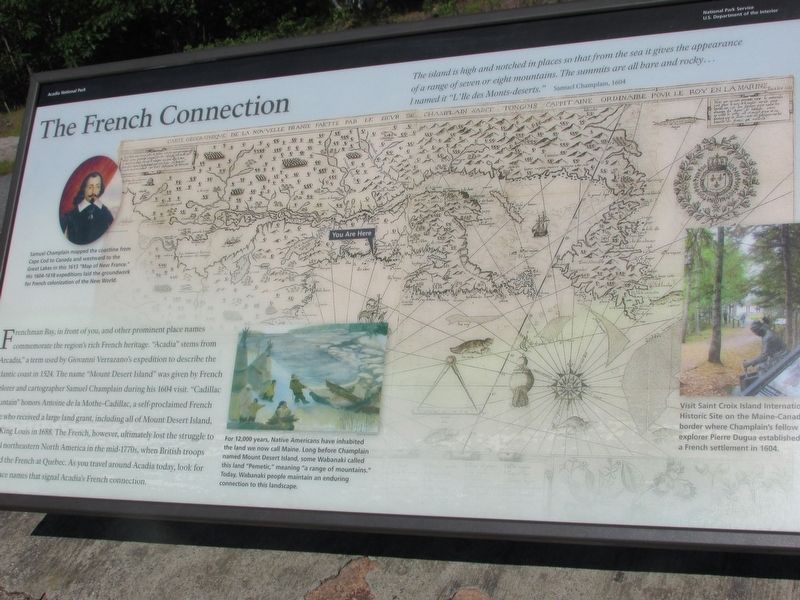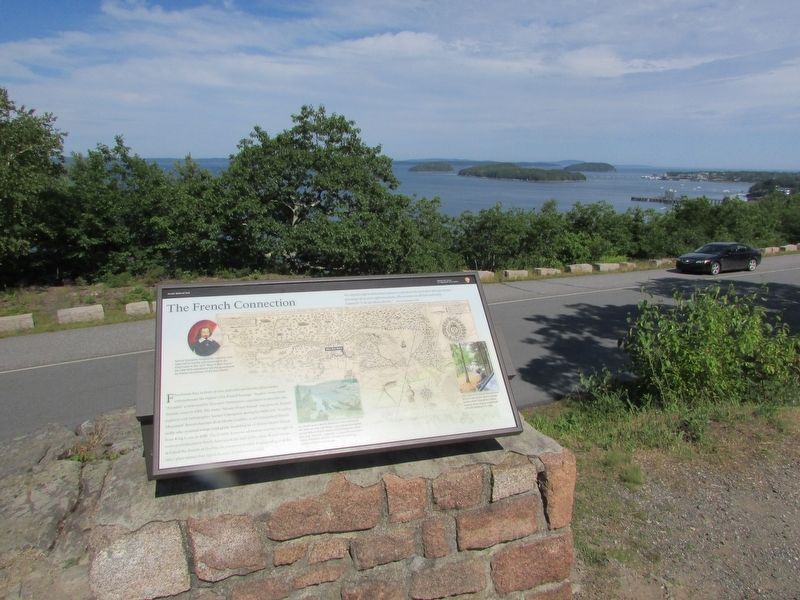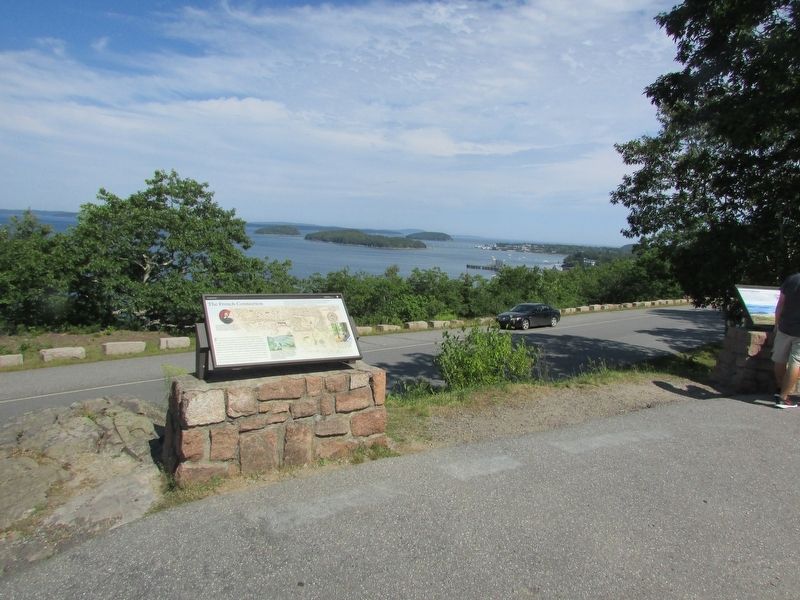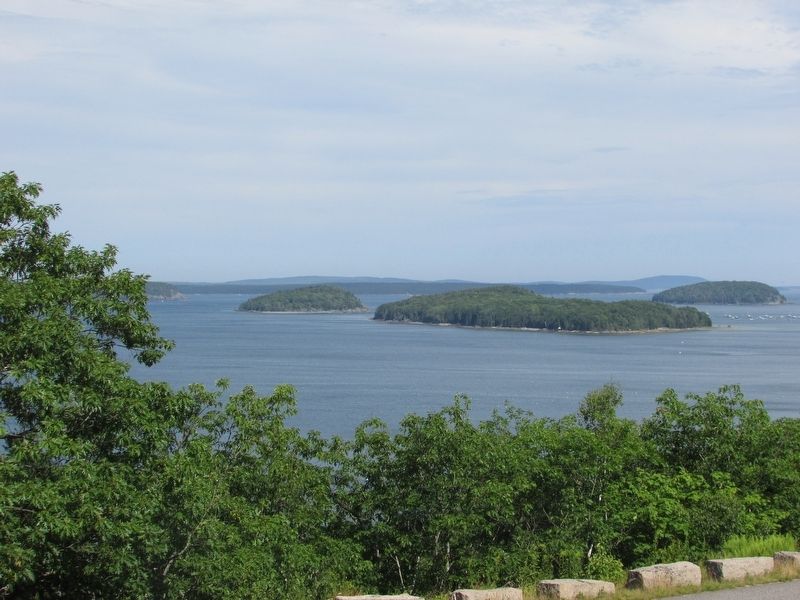Bar Harbor in Hancock County, Maine — The American Northeast (New England)
The French Connection
Acadia National Park
Frenchman Bay, in front of you, and other prominent names commemorate the region’s rich French heritage, “Acadia” stems from “Arcadia,” a term used by Giovanni Verrazano’s expedition to describe the Atlantic coast in 1524. The name “Mount Desert Island” was given by French explorer and cartographer Samuel Champlain during his 1604 visit. “Cadillac Mountain” honors Antoine de la Mothe-Cadillac, a self-proclaimed French noble who received a large land grant, including all of Mount Desert Island, from King Louis in 1688. The French, however, ultimately lost the struggle to control northeastern North America in the mid-1770s, when British troops defeated the French at Quebec. As you travel around Acadia today, look for other place names that signal Acadia’s French connection.
Samuel Champlain mapped the coastline from Cape Cod to Canada and westward to the Great Lakes in the 1613 “Map of New France.” His 1604-1618 expeditions laid the groundwork for French colonization of the New World.
“The island is high and notched in places so that from the sea it gives the appearance of a range of seven or eight mountains. The summits are all bare and rocky . . . I named it “L’ Ile des Monts-deserts.” Samuel Champlain, 1604
For 12,000 years, Native Americans have inhabited the land we now call Maine. Long before Champlain named Mount Desert Island, some Wabanaki called this land “Pemetic” meaning “a range of mountains.” Today, Wabanaki people maintain an enduring connection to this landscape.
Erected by National Park Service.
Topics and series. This historical marker is listed in these topic lists: Exploration • Native Americans. In addition, it is included in the Acadian History series list.
Location. 44° 24.323′ N, 68° 14.221′ W. Marker is in Bar Harbor, Maine, in Hancock County. Marker is on Paradise Hill Road, on the left when traveling south. Marker is located in Acadia National Park. Touch for map. Marker is in this post office area: Bar Harbor ME 04609, United States of America. Touch for directions.
Other nearby markers. At least 8 other markers are within 2 miles of this marker, measured as the crow flies. Ocean Highways (a few steps from this marker); Frenchman Bay (a few steps from this marker); Signs of the Seasons (approx. 0.6 miles away); The 1947 Fire (approx. 1½ miles away); Bar Island (approx. 1.7 miles away); The Kedge (approx. 1.7 miles away); Cottage Street (approx. 1.8 miles away); Criterion Theatre / Le Théâtre Criterion (approx. 1.9 miles away). Touch for a list and map of all markers in Bar Harbor.



